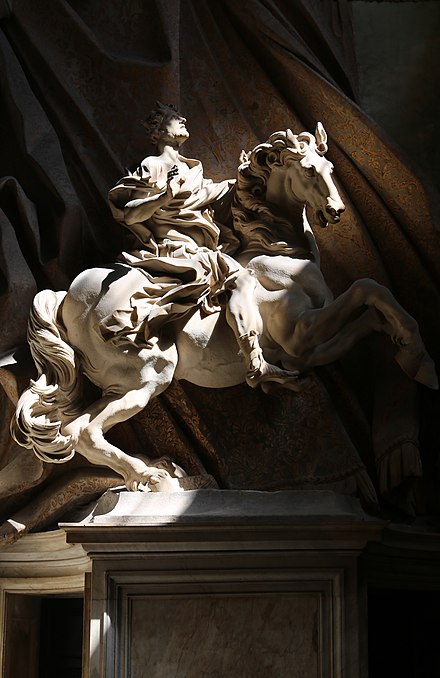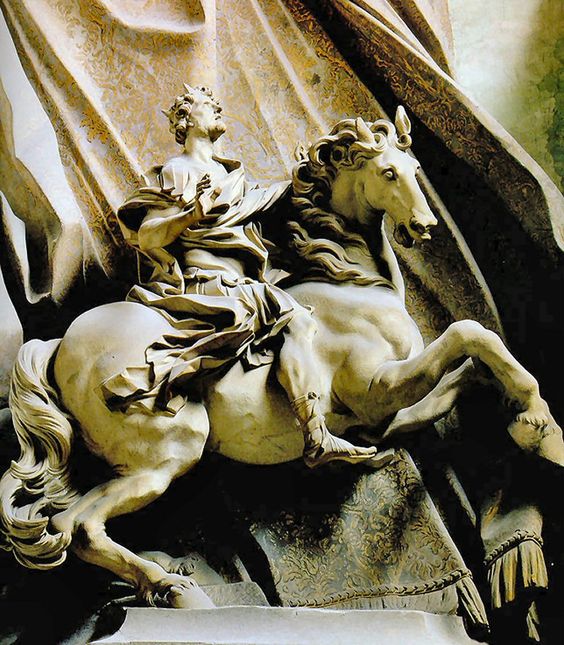The Vision of Constantine is an equestrian sculpture by the Italian artist Gian Lorenzo Bernini, located in the Scala Regia by St. Peter’s Basilica in Vatican City. Originally commissioned as a free standing work of art within St. Peter’s itself, the sculpture was finally unveiled in 1670 as an integral part of the Scala Regia – Bernini’s redesigned stairway between St. Peter’s Basilica and the Vatican Palace. Unlike other large works by Bernini, art historians have suggested that this work was almost entirely undertaken by him – no other sculptors have been recorded as receiving payment.
The sculpture has a long history, beginning in 1654, when Bernini began the work, quite possibly commissioned by Pope Innocent X. The original plan was to place the sculpture within St Peter’s Basilica. However, when Alexander VII assumed the papal throne a year later, the project was reinvigorated, securing the arrival of a large block of marble which Bernini could use to put existing drawings and sketches into practice. However, for reasons that are unclear, the project was delayed again, and Bernini did not start work on the block until 1662.
It was only at an undefined point in the 1660s that the location for the statue become the new Scala Regia that Bernini himself was designing. Bernini continued refining the equestrian sculpture, and changes were made to the design to cope with the new location on the Scala Regia. Huge clay models of the sculpture were placed within the niche, giving Bernini an idea of what the final composition would look like when placed in situ. Because of the tallness of the niche, overwhelming the sculpture, folding, dynamic drapery was added to the overall decorative effect, to be placed behind the marble horse.
This allowed Bernini to make the final touches to Constantine, and it was declared ready at the end of 1668
Transporting the sculpture from Bernini’s studio to Scala Regia took ten days and required guards to look after it during the night. A variety of straw, winches, planks and beams, plus sledges and oxen were needed to pull the massive sculpture. It finally arrived in January 1669. Architectural and decorative work (such as the drapery) on the niche around the sculpture continued through 1669, as did polishing of the statue itself.
As the sculpture is not free-standing it does not qualify as a statue.
Moreover the sculpture is not approachable by common people as the Swiss guard will not allow them to climb the Scala Regia
The pictures are from Wikipedia.org and pilgrimstorome.org








